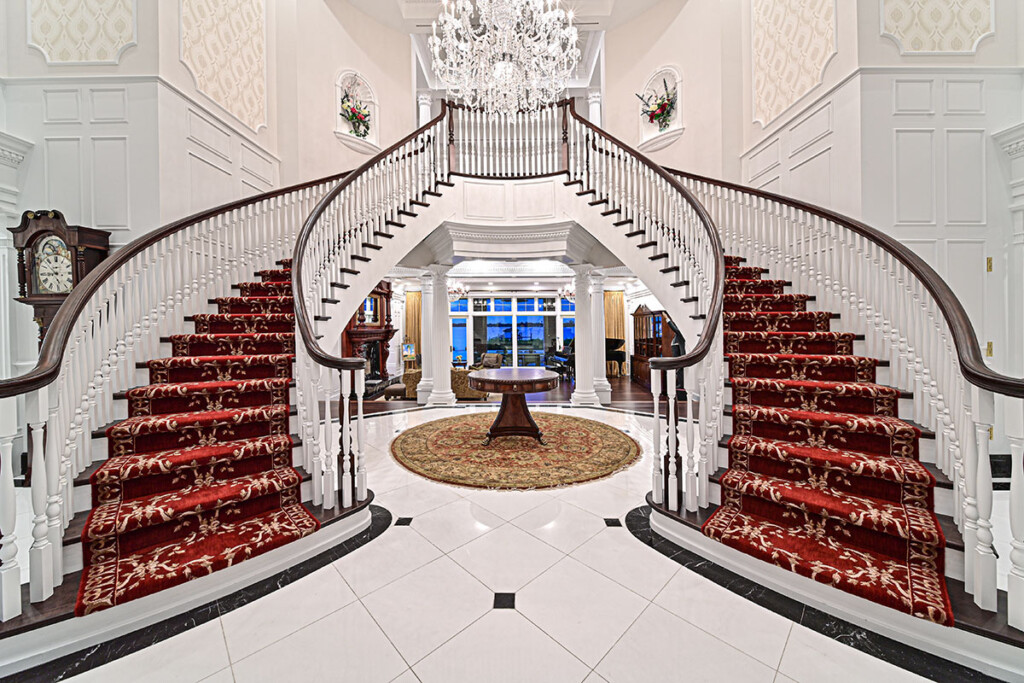When building a custom home, one of the most important decisions you’ll face is the style and atmosphere you want to create. The overall aesthetic of your home can be categorized into two main styles: formal and informal design. Formal homes often evoke a sense of elegance and sophistication, while informal homes tend to create a more relaxed and welcoming atmosphere. But what if you’re torn between the two? How can you choose which direction to take or find a balance between both styles? Here’s a guide to help you decide how to approach this choice when working with your Florida custom home builder.

Understanding Formal and Informal Design Principles
Before making a decision about which type of home best fits your lifestyle, you should understand the defining characteristics of formal and informal home designs.
Formal Homes: A formal home design typically includes grand, symmetrical layouts, intricate architectural details, and a sense of order. These homes often feature classic elements like columns, elaborate molding, high ceilings, and statement-making rooms such as a formal dining room or parlor. Formal homes are ideal for those who entertain guests frequently or enjoy a more traditional and refined aesthetic.
Informal Homes: Informal homes lean towards comfort and functionality. These homes are designed with an emphasis on open spaces, cozy areas for family gatherings, and a more relaxed vibe. Think of large, open-plan living areas, informal dining spaces, and materials that prioritize comfort over extravagance. Informal designs often feature a less structured layout, using warm, inviting tones, simple finishes, and flexible spaces to cater to a casual lifestyle.
Deciding Between Formal and Informal Design
Of course, your personal style plays a significant role in the design of your home. If you’re drawn to classic architectural features, a formal home may be more appealing. Conversely, if you prefer a more relaxed and approachable aesthetic, an informal home will likely reflect your style.
However, deciding between formal and informal design involves more than just aesthetics. Your day-to-day lifestyle and priorities should inform your decision as well.
Lifestyle and Family Dynamics: Do you frequently host large gatherings, formal dinners, or elegant parties? A formal design might be the best choice for you. If you have young children, entertain frequently, or prefer casual dinners and activities, an informal home may be more practical and comfortable.
Space and Flow: Formal homes often feature separate, defined spaces. A formal living room may be used exclusively for special occasions, while informal homes prioritize open floor plans that seamlessly blend the kitchen, dining, and living areas. Consider how much space you need and how you envision using your home daily.
Blending Formal and Informal Styles
If you find it difficult to choose between a formal or informal home design, you don’t necessarily have to pick one over the other. In fact, blending both styles can create a balanced, harmonious living environment. Here are some tips on how to incorporate elements from both worlds.
Create Distinct Zones: You can have the best of both worlds by designing distinct zones within your home. For example, a formal living room or dining room can be positioned near an informal family room or kitchen, allowing you to switch between elegant gatherings and casual family time seamlessly. This layout offers flexibility without sacrificing style.
Use Architectural Features Selectively: If you love the elegance of formal architecture but want a more relaxed ambiance, incorporate formal elements in select areas. You can also utilize a formal aesthetic for the exterior of the home, while softening the interior with a less formal approach.
Incorporate Materials That Balance Both Styles: Materials like hardwood floors or stone can work well in both formal and informal settings. Use high-end finishes like marble countertops in the kitchen or bathrooms for a formal touch, while opting for more relaxed design elements in living spaces.
Play with Color Palettes: You can easily mix formal and informal elements by using color. A neutral or soft color palette can evoke a formal atmosphere, while the addition of warmer tones or playful pops of color can introduce a more casual vibe. Consider blending elegant deep blues or grays with more vibrant accent colors for a balanced look.
If you are unsure of which style is right for you – or how to harmonize elements of each – consider working with a reputable custom home builder. With nearly six decades of experience in the Sarasota/ Manatee area, the team at Bruce Williams Homes will ensure that your vision comes to life in a way that suits your lifestyle perfectly.
When building a custom home, one of the most important decisions you’ll face is the style and atmosphere you want to create. The overall aesthetic of your home can be categorized into two main styles: formal and informal design. Formal homes often evoke a sense of elegance and sophistication, while informal homes tend to create a more relaxed and welcoming atmosphere. But what if you’re torn between the two? How can you choose which direction to take or find a balance between both styles? Here’s a guide to help you decide how to approach this choice when working with your Florida custom home builder.

Understanding Formal and Informal Design Principles
Before making a decision about which type of home best fits your lifestyle, you should understand the defining characteristics of formal and informal home designs.
Formal Homes: A formal home design typically includes grand, symmetrical layouts, intricate architectural details, and a sense of order. These homes often feature classic elements like columns, elaborate molding, high ceilings, and statement-making rooms such as a formal dining room or parlor. Formal homes are ideal for those who entertain guests frequently or enjoy a more traditional and refined aesthetic.
Informal Homes: Informal homes lean towards comfort and functionality. These homes are designed with an emphasis on open spaces, cozy areas for family gatherings, and a more relaxed vibe. Think of large, open-plan living areas, informal dining spaces, and materials that prioritize comfort over extravagance. Informal designs often feature a less structured layout, using warm, inviting tones, simple finishes, and flexible spaces to cater to a casual lifestyle.
Deciding Between Formal and Informal Design
Of course, your personal style plays a significant role in the design of your home. If you’re drawn to classic architectural features, a formal home may be more appealing. Conversely, if you prefer a more relaxed and approachable aesthetic, an informal home will likely reflect your style.
However, deciding between formal and informal design involves more than just aesthetics. Your day-to-day lifestyle and priorities should inform your decision as well.
Lifestyle and Family Dynamics: Do you frequently host large gatherings, formal dinners, or elegant parties? A formal design might be the best choice for you. If you have young children, entertain frequently, or prefer casual dinners and activities, an informal home may be more practical and comfortable.
Space and Flow: Formal homes often feature separate, defined spaces. A formal living room may be used exclusively for special occasions, while informal homes prioritize open floor plans that seamlessly blend the kitchen, dining, and living areas. Consider how much space you need and how you envision using your home daily.
Blending Formal and Informal Styles
If you find it difficult to choose between a formal or informal home design, you don’t necessarily have to pick one over the other. In fact, blending both styles can create a balanced, harmonious living environment. Here are some tips on how to incorporate elements from both worlds.
Create Distinct Zones: You can have the best of both worlds by designing distinct zones within your home. For example, a formal living room or dining room can be positioned near an informal family room or kitchen, allowing you to switch between elegant gatherings and casual family time seamlessly. This layout offers flexibility without sacrificing style.
Use Architectural Features Selectively: If you love the elegance of formal architecture but want a more relaxed ambiance, incorporate formal elements in select areas. You can also utilize a formal aesthetic for the exterior of the home, while softening the interior with a less formal approach.
Incorporate Materials That Balance Both Styles: Materials like hardwood floors or stone can work well in both formal and informal settings. Use high-end finishes like marble countertops in the kitchen or bathrooms for a formal touch, while opting for more relaxed design elements in living spaces.
Play with Color Palettes: You can easily mix formal and informal elements by using color. A neutral or soft color palette can evoke a formal atmosphere, while the addition of warmer tones or playful pops of color can introduce a more casual vibe. Consider blending elegant deep blues or grays with more vibrant accent colors for a balanced look.
If you are unsure of which style is right for you – or how to harmonize elements of each – consider working with a reputable custom home builder. With nearly six decades of experience in the Sarasota/ Manatee area, the team at Bruce Williams Homes will ensure that your vision comes to life in a way that suits your lifestyle perfectly.






